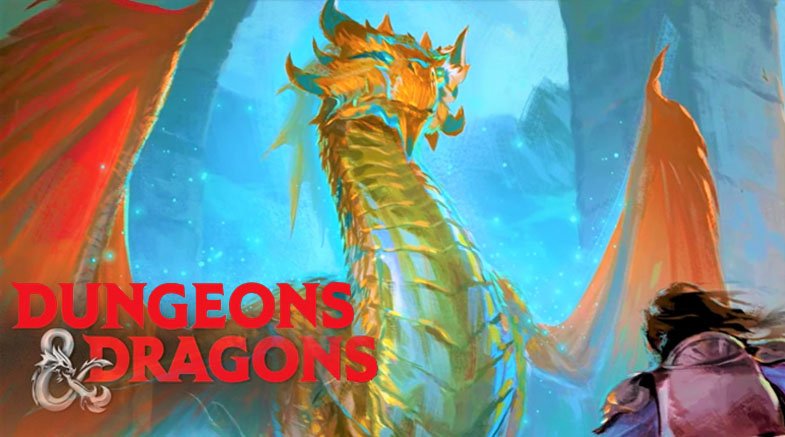Discover the arcane mysteries of size in Dungeons and Dragons 5E. Unravel the intricate tapestry of creatures from Tiny to Colossal, shaping both narrative and gameplay. Embark on heroic adventures for all sizes.

In Dungeons and Dragons 5E, adventurers encounter not only dragons and dungeons, but also a labyrinth of rules that govern every aspect of the game. Among these, the creature size mechanics are fundamental yet often perplexing.
To aid you in deciphering this arcane puzzle, this guide shall illuminate the path through the intricacies of size in the realm of D&D. By delving into the heart of this matter. We shall demystify the concepts from Diminutive to Colossal, as found in the venerable dnd size chart, ensuring that even the uninitiated can confidently navigate this fascinating terrain.
1. Tiny, Small, Medium Size Spectrum
Size in D&D is a vital factor that influences not only the narrative but also the mechanics of the game. Creatures range from Tiny to Colossal, with each size category holding unique attributes. Tiny creatures are easily overlooked, like a miniature fairy but possess unique powers.
Small creatures like goblins are more noticeable, but can also exploit their size for stealth and evasion. Medium-sized beings, including most humans, form the baseline, and many game elements are tailored to them. Understanding these size categories is essential, as they determine everything from how easily creatures can hide to the weapons they can wield effectively.
2. Diminutive Wonders and Small Terrors of Creatures
Tiny creatures are minuscule, often evoking the imagery of pixies or fireflies. However, don’t let their size deceive you – these beings pack magical prowess and offer intriguing opportunities for creative gameplay. Small creatures, on the other hand, defy their size with their tenacity.
Cunning goblins and sneaky halflings fall into this category, utilizing their compact forms to navigate treacherous terrain and launch surprise attacks. Remember that their smaller frames grant them advantages in tight spaces and make them more susceptible to certain combat tactics.
3. The Heart of Adventures: Exploring Medium Creatures
The heart of many heroic tales, medium creatures are the bread and butter of Dungeons and Dragons’ adventures. Most player characters, such as humans, elves, and dwarves, belong to this category. Their versatility stems from a balance between size and abilities.
Medium-sized beings can wield various weapons, interact effectively with their surroundings, and fit most societal norms. The game mechanics often center around this category, providing a solid foundation for engaging narratives and thrilling escapades.
4. The Mighty Leagues: Unearthing Large and Huge Creatures
As we ascend the size ladder, we encounter large creatures that truly command attention. Like menacing ogres, large creatures possess a formidable presence on the battlefield. Their size enables them to wield hefty weapons and strike fear into their adversaries.
Huge creatures, however, bring a sense of primal might to the game. Think of dragons or towering giants – their sheer size grants them access to devastating attacks and an awe-inspiring aura. Adventurers facing these colossal beings must adapt tactics to overcome their overwhelming force.
5. Behemoths and Beyond, Facing Gargantuan and Colossal Creatures
Gargantuan creatures are the stuff of legends and nightmares. These colossal beings, such as ancient dragons, can single-handedly reshape the battlefield. Their immense size translates to unparalleled strength and durability, and their abilities often defy mortal comprehension.
As you venture further, Colossal creatures await – cosmic forces that can reshape the very fabric of reality. Confronting these titans requires physical might, strategic understanding, and a touch of luck.
6. Implications for Combat and Role-play
Size influences every aspect of the D&D experience, from combat dynamics to role-playing interactions. Smaller creatures can find refuge in unlikely places, while larger beings can intimidate foes or serve as mobile cover.
Combat with creatures of varying sizes presents distinct challenges, as size affects movement, reach, and attack potential. Moreover, size can shape how a character interacts with NPCs and the environment, offering opportunities for memorable role-playing moments.
7. Tailoring Adventures for All Sizes
Dungeons and Dragons thrive on its diversity, and size is a crucial aspect of this richness. When crafting your adventures, consider the impact of size on encounters, puzzles, and plotlines. Incorporating creatures of different sizes can add depth and complexity to your campaign.
Imagine a party of adventurers navigating through a magical forest inhabited by diminutive sprites while simultaneously contending with the looming threat of a colossal ancient treant. Such encounters showcase the intricate dance of size mechanics and storytelling, ensuring an engaging experience for players of all backgrounds.
Final Words
The labyrinthine realms of Dungeons and Dragons 5E come alive with creatures of varying sizes, each contributing to the tapestry of the adventure in its unique way. Armed with a deeper understanding of the DND size chart and its intricacies, you can now navigate the mysterious landscape of creature sizes.
From the smallest fairies to the mightiest dragons, the realm of D&D beckons with endless possibilities, awaiting intrepid souls to unravel its secrets and forge their heroic sagas.